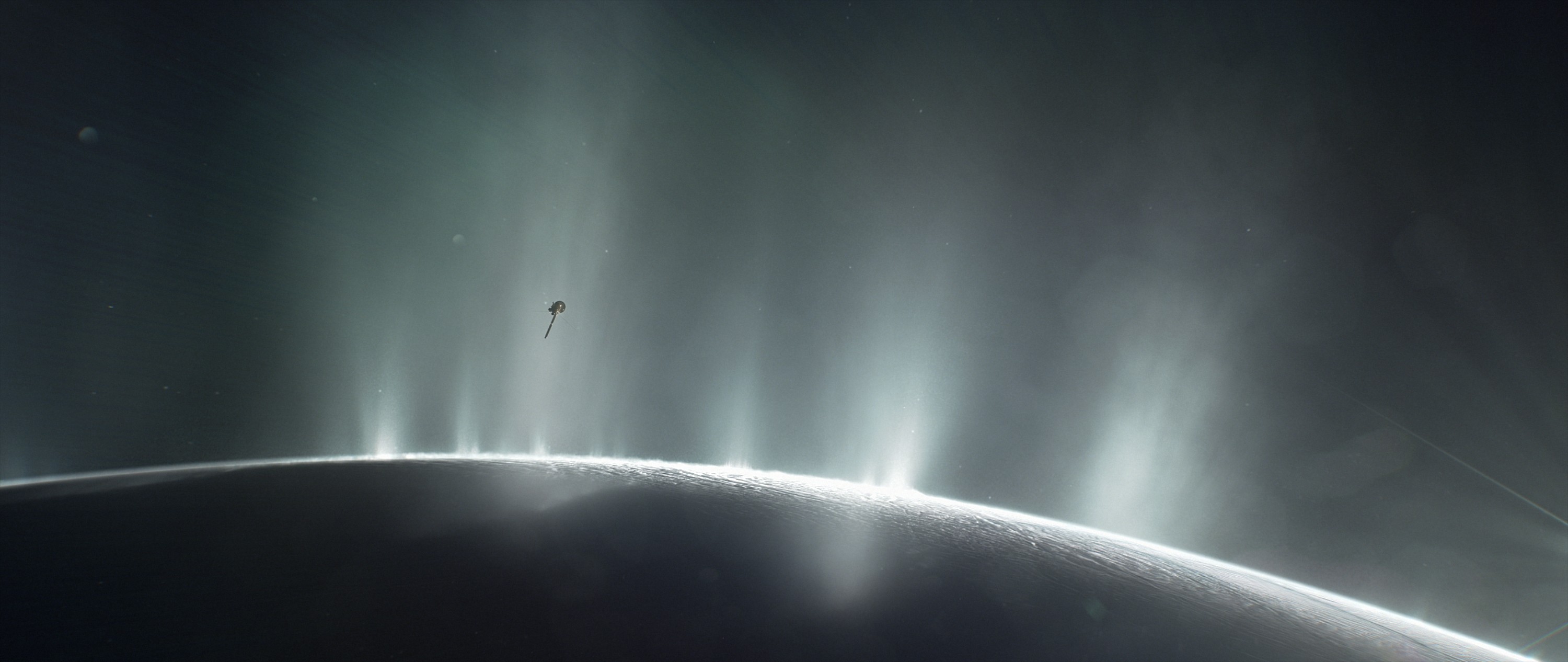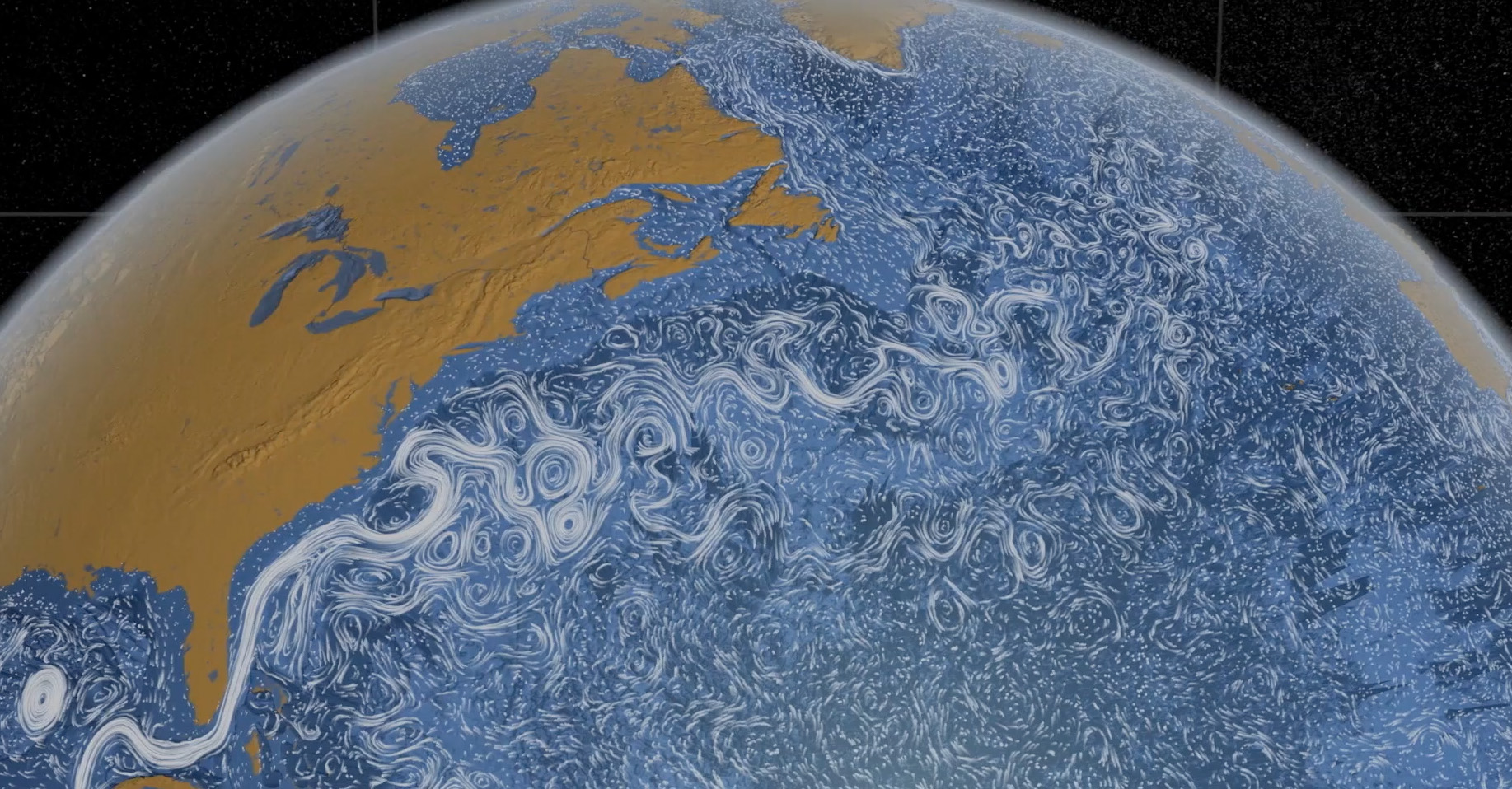On Icy Moons, Alien Life May Go with the Flow of Ocean Currents

One of the key determinants of which worlds can host life may lie in the motion of their oceans.
Right now, calculating that motion is a challenge. After all, scientists can't just dip their toes in the water. But new research pulls together information about four of the most intriguing ocean worlds to inform models of what their subsurface oceans might be doing.
"These oceans are really interesting in and of themselves," Krista Soderlund, an expert on planetary fluid dynamics at the University of Texas at Austin and author of the new research, told Space.com. "You often are first drawn to a satellite by what it looks like on its surface, but I think that what is going on beneath the surface is just as exciting and interesting."
Related: Photos: Enceladus, Saturn's Cold, Bright Moon
And according to her new calculations, there is indeed plenty going on beneath the surface of the solar system's icy moons. Soderlund focused on Jupiter's moons Europa and Ganymede and on Saturn's moons Enceladus and Titan.
In each case, she tried to understand how factors like the world's rotation rate, the thickness of its ice shell and the density of its seawater might affect how much water moves around the hidden oceans.
Her calculations suggest that the oceans on Enceladus and perhaps Titan could host currents in alternating bands and particularly strong heat flow near the poles. Europa, on the other hand, because its spin is less of a factor, seemed to sport the most noticeable heat flow near its equator. (Scientists don't know enough about Ganymede to quite settle on a specific ocean current model.)
Get the Space.com Newsletter
Breaking space news, the latest updates on rocket launches, skywatching events and more!
Predicting such activity inside icy moons is a promising indicator for those who wonder whether such oceans could be home to life. "When we think about ocean dynamics, it's really important for habitability," Alyssa Rhoden, a scientist at the Southwest Research Institute focused on ice shells, told Space.com. Rhoden wasn't involved in the new research but is co-leading a new network for ocean worlds research. "It gives us a sense of how much that swirling and whirling is going on and how you get nutrients from one place to another place, how you move energy from one place to another place."
More swirling and whirling means better odds that the ingredients of life can actually collide. But despite the work Soderlund has put into trying to understand these hidden oceans, the result is still an echo of what could be happening on these worlds.
It's the universal challenge of modeling as a scientific approach: a model will never be quite as intricate or comprehensive as reality. "All of our models are wrong, they're all wrong," Rhoden said. "Because we can't actually model everything."

But getting more data about these moons and their hidden oceans will fine-tune these models, Rhoden said, and that doesn't necessarily require directly sampling the oceans — although needless to say, scientists would love to do that.
Long before such feats are possible, a different mission, scientists can turn to NASA's Europa Clipper and the European Space Agency's Jupiter Icy Moons Explorer (JUICE), both scheduled to launch in the 2020s.
Soderlund is on the team behind one of Europa Clipper's instruments, the Radar for Europa Assessment and Sounding: Ocean to Near-Surface device, or REASON. Because an ocean's dynamics affect the ice shell above it, REASON data should help scientists vet some of their hypotheses about Europa's ocean activity, she said.
If her prediction that heat flow is strongest in Europa's ocean at the equator is correct, for example, the moon's ice shell should be thinner there. It's an approach that turns the massive annoyance of an ice sheet blocking a direct view of your research subject into a tool and recognizes the ways these strange oceans must be connected to their surroundings — just as is true here on Earth.
"The fact that we're predicting they have strong ocean currents in itself is pretty exciting, since then it's not just a really passive body of water, it actually has some really cool, intriguing and fun characteristics," Soderlund said. "It's kind of like our own Earth's ocean in that respect, where there's just a lot going on."
The research was described in a paper published on July 29 in the journal Geophysical Research Letters.
- Photos: Europa, Mysterious Icy Moon of Jupiter
- Mesmerizing Satellite Video Captures Magical View of Earth
- Europa’s Buried Ocean Could Rise to the Surface (Video)
Email Meghan Bartels at mbartels@space.com or follow her @meghanbartels. Follow us on Twitter @Spacedotcom and on Facebook.
Join our Space Forums to keep talking space on the latest missions, night sky and more! And if you have a news tip, correction or comment, let us know at: community@space.com.

Meghan is a senior writer at Space.com and has more than five years' experience as a science journalist based in New York City. She joined Space.com in July 2018, with previous writing published in outlets including Newsweek and Audubon. Meghan earned an MA in science journalism from New York University and a BA in classics from Georgetown University, and in her free time she enjoys reading and visiting museums. Follow her on Twitter at @meghanbartels.
